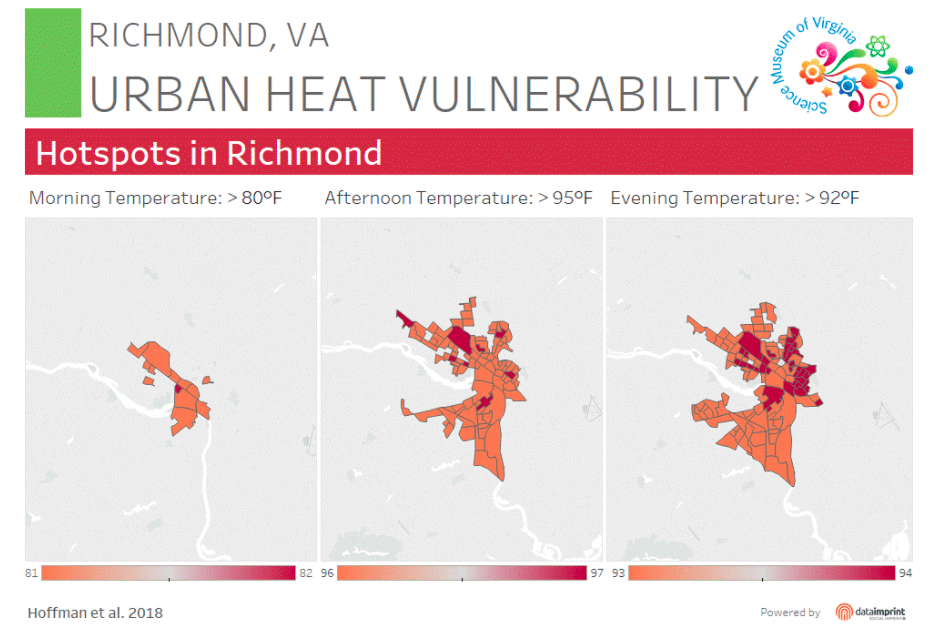Question Your World: What Does the New Federal Climate Report Say?
While some of us were out burning off those Thanksgiving calories on Black Friday, a team of more than 300 federal and non-federal science experts released a volunteer-coordinated, government-mandated assessment of the impacts of climate change on the United States, also known as the Fourth National Climate Assessment Volume 2. The burning question on climate-concerned minds has been: What does the new federal climate report say?
Volume 2 of the National Climate Assessment report, led by NOAA, builds on the previous government climate science report from 2017. This latest publication explains the infrastructural, economic, and public health-related impacts of climate change in the United States.
The findings are a stark challenge for our country to use science to build a better, climate-resilient world. Check out a few of big ideas from the report:
There are no credible alternative explanations for recent global warming other than heat-trapping gas emissions from human activities. For years now, we've seen many reports and journal articles on climate change, involving studies of volcanos, ancient carbon dioxide levels, current temperature changes, studies from space, and the ocean. Nearly everywhere on the globe, the reports say that human caused heat-trapping gases were the overwhelming variable for our warming planet.
Human heat-trapping gas (HTG) emissions will continue to affect Earth’s climate for decades and even centuries. Climate is a long game for sure, and some of these impacts will take some time to play out. Earth's climate system won’t change back overnight, even if we actively begin to alter our output of HTG. Another recent report by the IPCC showed we have about 12 years to halve our heat-trapping gas emissions to stay below 1.5°C global warming mark (we’ve already made it to about 1°C warming). This is another great reason why resiliency efforts matter so much. The many environments where our fellow humans live will all face different changes, so being prepared for the future is of paramount value. Sustainability measures can also help curb our HTG output, like designing more renewable energy infrastructure for future human developments. Lowering our food miles as consumers would not only lower our HTG output, but it would also make the local economy and food availability more resilient to changes, which could impact the farms we currently rely on for many daily food items.
There are significant climate change impacts already being felt by Americans – including public health, infrastructural, economic, and environmental impacts. Here on the East Coast our Urban Heat Island studies have shown the health impacts faced by vulnerable populations in lower income parts of our cities. Many coastal dwellings have been relocated and there was even a voting measure on the ballot this year regarding recurrent flooding in the Commonwealth. The costs of dealing with health issues, infrastructural upgrades, extreme weather response, and beyond have certainly made climate-change-related costs significantly more noticeable to many regions near and far. Slower and bigger hurricanes, rising sea levels, longer mosquito friendly seasons, hotter nights year round, and other variables have been in news headlines for years now, as well.
These negative impacts disproportionately affect communities with less means to adapt to them, which in turn worsens the already increasing inequality in the US. Fixing home infrastructure, getting additional health coverage, moving to another home, and other big changes are very expensive. Climate change impacts will only be harder for individuals that can't afford these options than for those with more funds available. Community-wide resiliency measures can protect all of our region's citizens while also enhancing the entire area's sustainability.

Future risks from climate change depend almost entirely on decisions made today – so, in effect, the future is absolutely in our hands! This report conveys that our actions or inactions today will ultimately determine what kind of a planet we leave for future generations. There is a great urgency here, which goes hand in hand with another large report published a little earlier this year by an international council of scientists. The UN produced report also states that immediate actions are needed to prevent further intensification of climate-related hazards. This report digs deeper into the many differences between the planet warming up 1.5 verses 2 degrees Celsius.
Meanwhile back at the new federal climate report, there are many examples of communities around the United States acting on these changes now. Here in Virginia, Governor Northam’s Executive Order 24, which establishes a coastal resiliency master plan, is a step towards building resilience to the impacts of climate change. But there’s no time to slouch and much more can be done to increase resilience to climate change in our cities and rural areas.
Once again folks, a resilient community is a safer and more sustainable community!